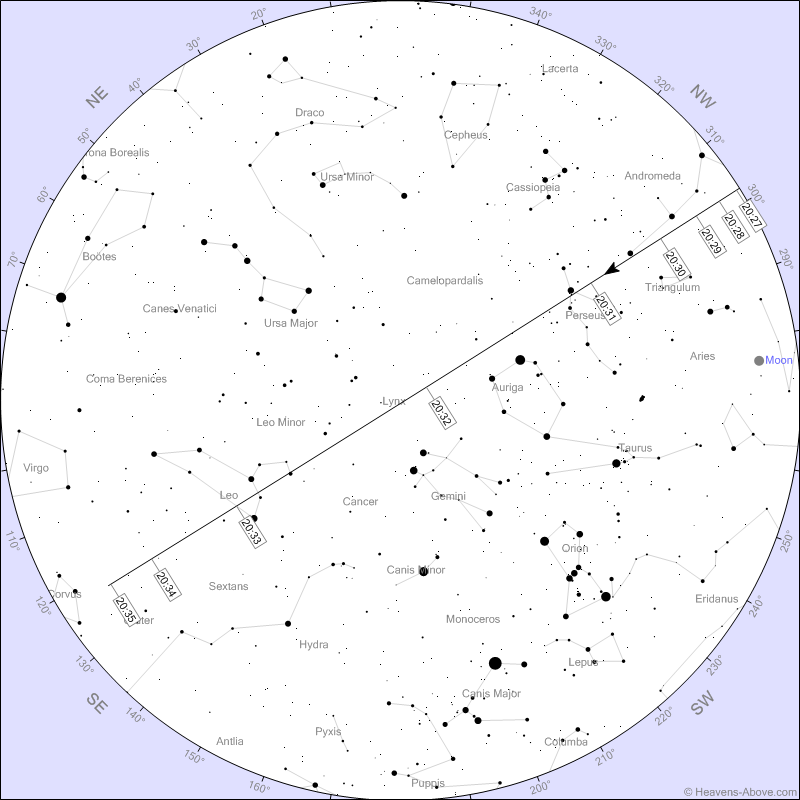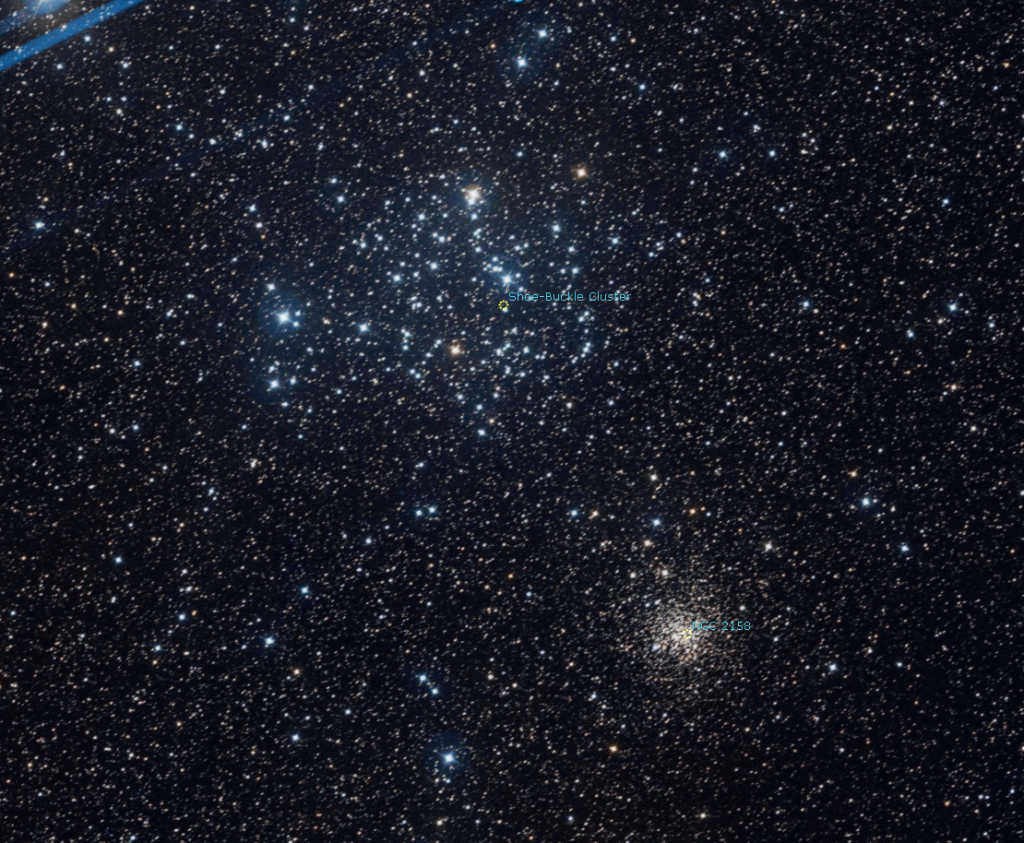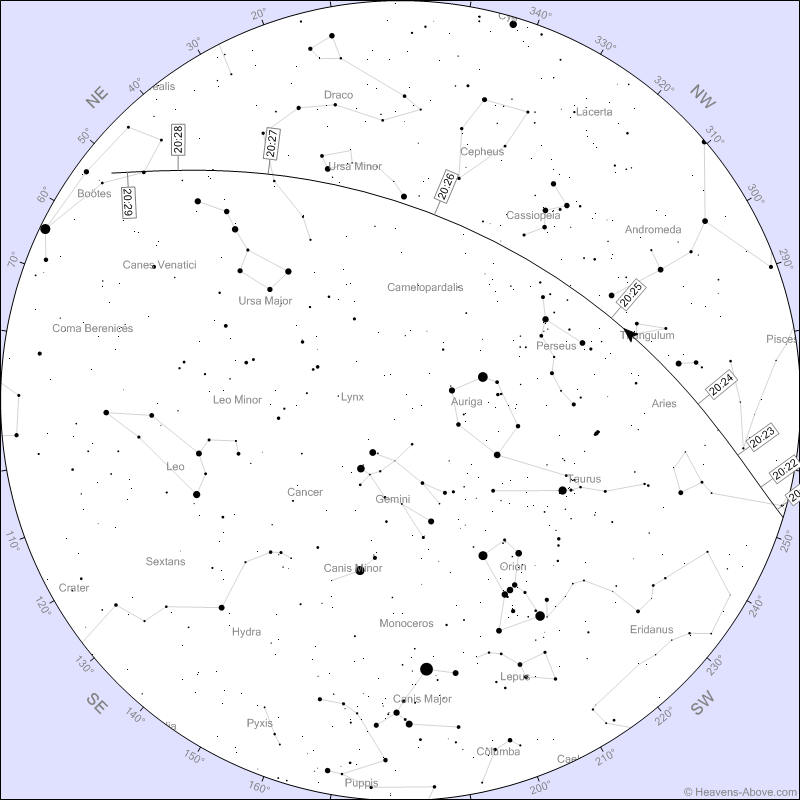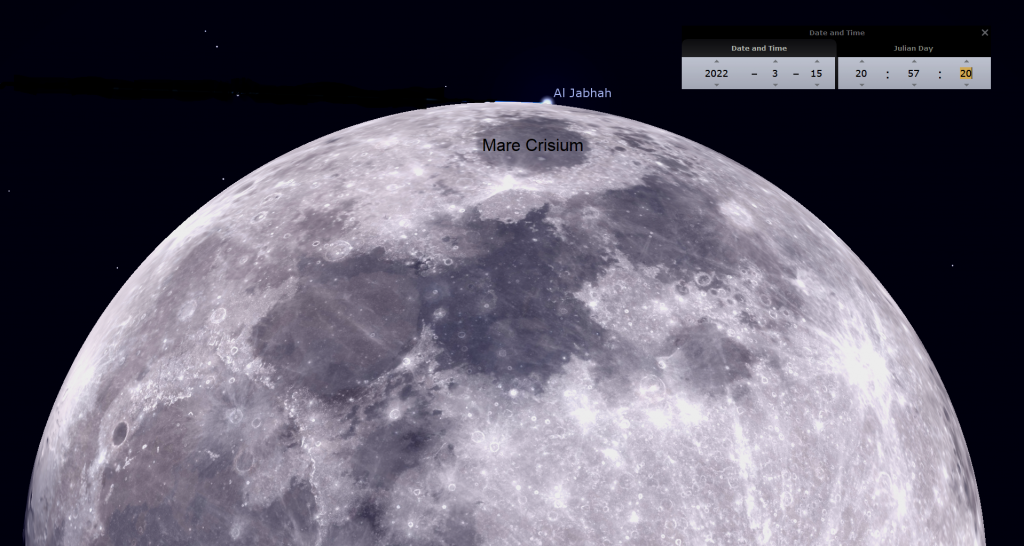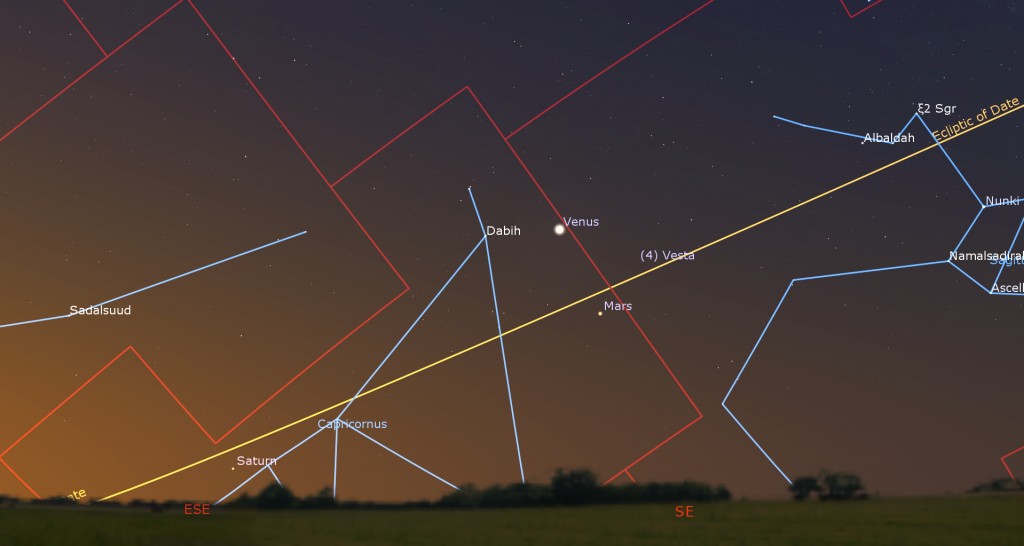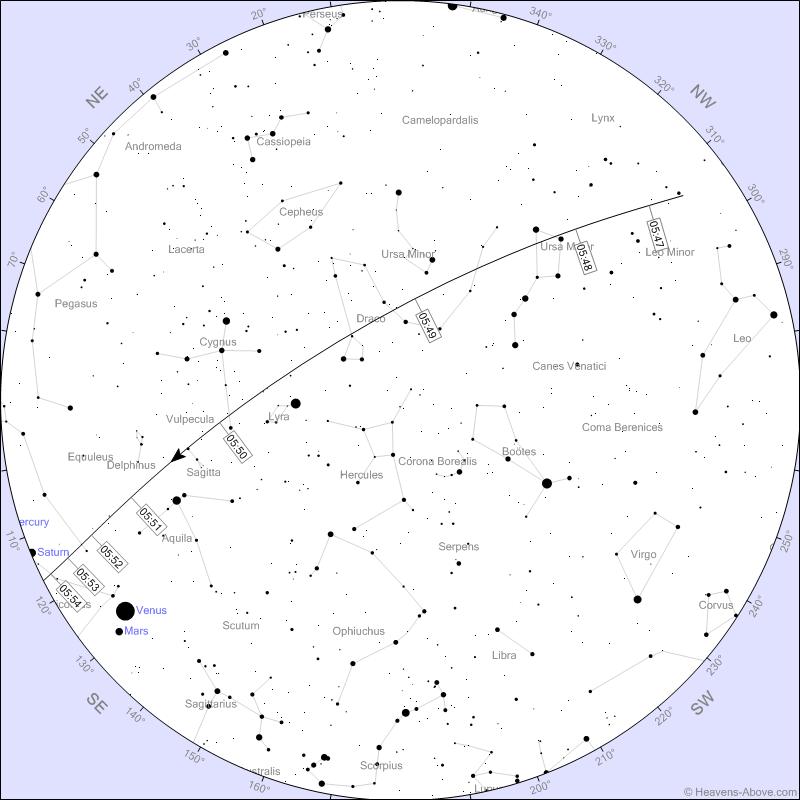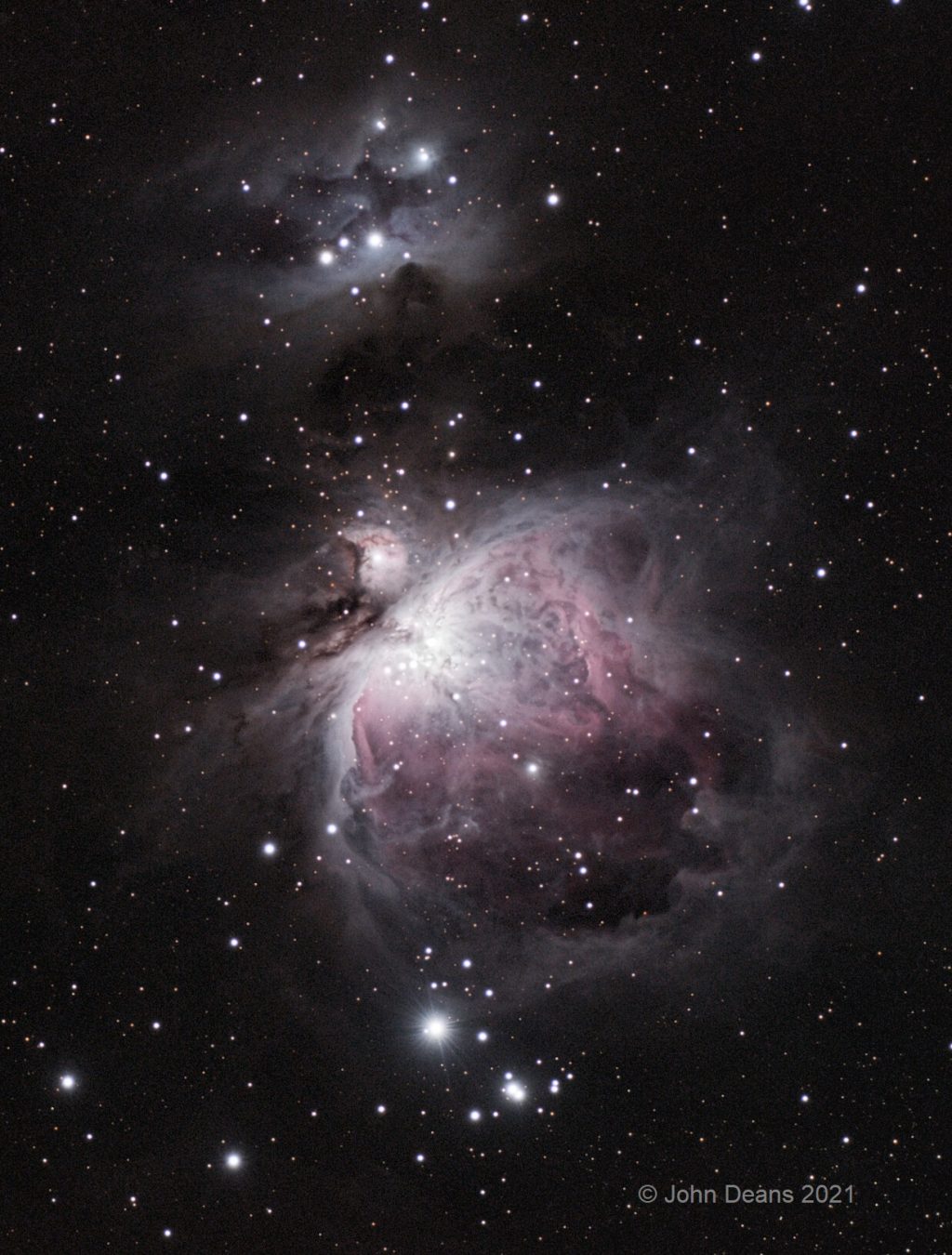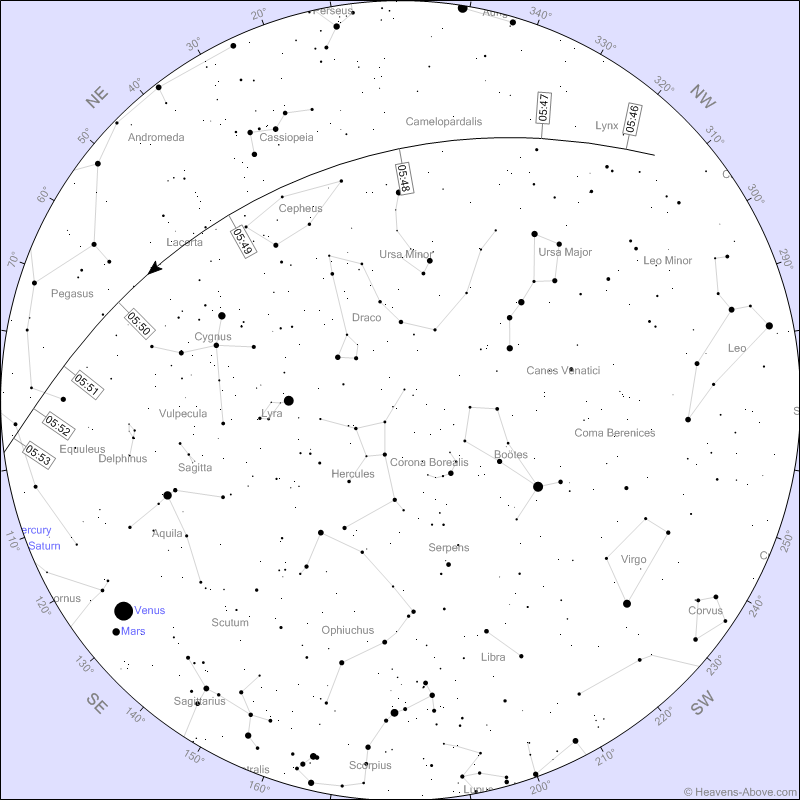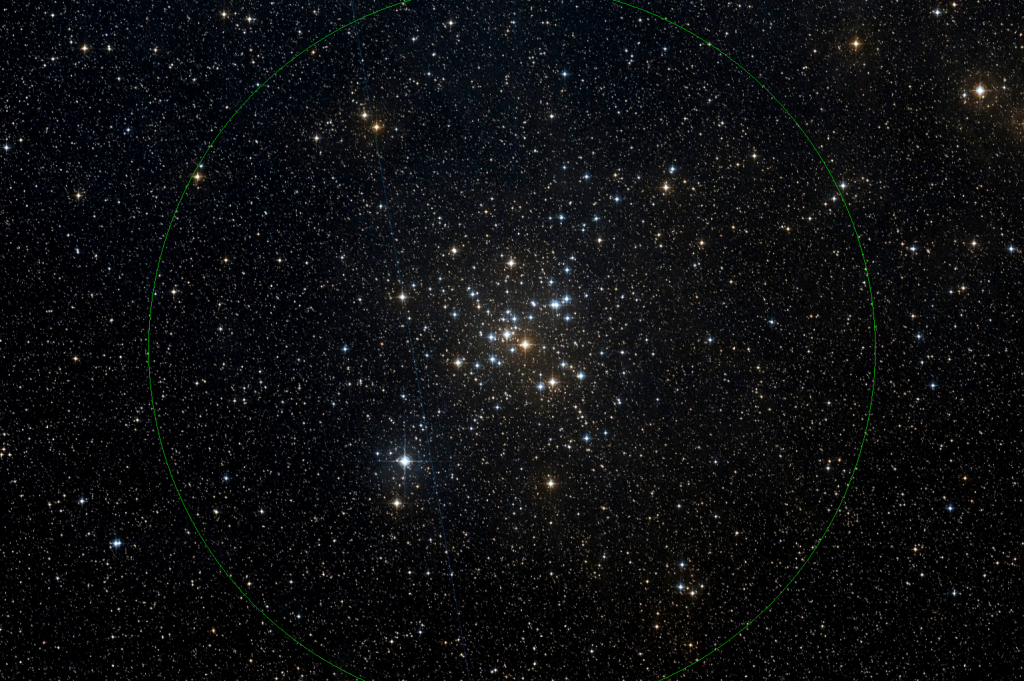Greater Toronto Area Space Station Flyovers for the week of March 27th, 2022
As shown above, on Saturday, April 2, 2022 from 8:29 pm to 8:35 pm EDT, the International Space Station will fly high overhead of the GTA in an extremely bright pass, rising from the west-northwestern horizon, and then flying past the bright stars Mirfak, Capella, and Regulus before disappearing into Earth’s shadow just above the…
Read more
